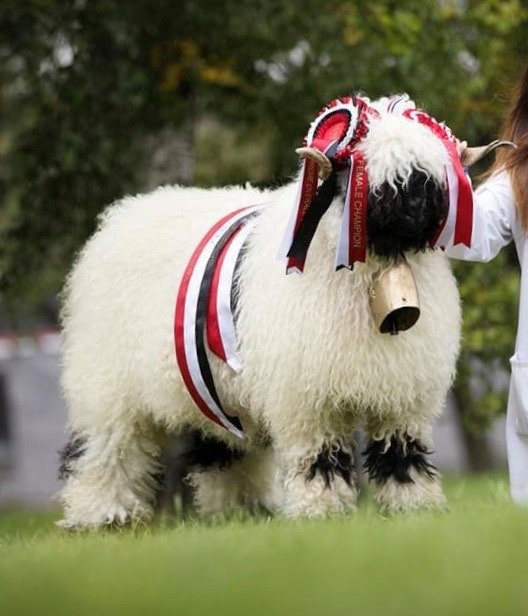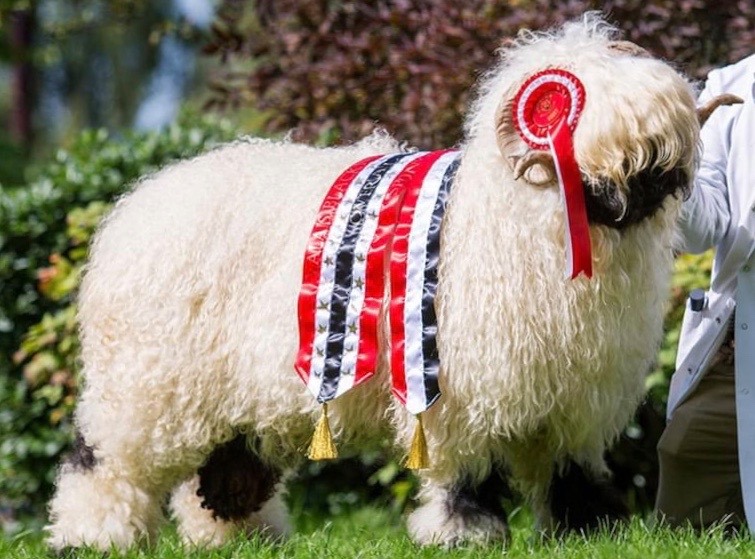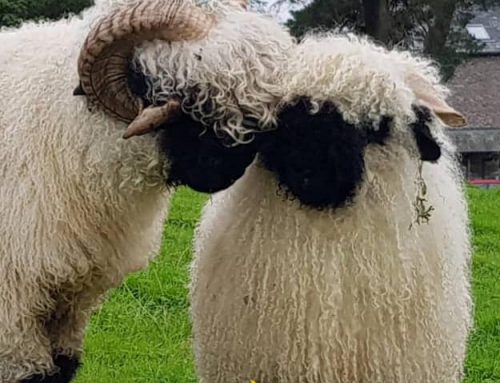*Scrapie & Genotyping*
With increased discussion and confusion surrounding scrapie genotyping within the Valais Blacknose Sheep breed we would like to draw your attention to a few main points.
What is Scrapie?
Scrapie is an infectious wasting disease affecting the nervous system of adult sheep and is very difficult to control. It has been a notifiable disease in the UK since 1993 and is one of the transmissible spongiform encephalopathies (TSEs). The causal agent is resistant to normal disinfection procedures and the disease has a long incubation period. There is no cure, no vaccine, the condition is fatal and animals pass on their genetic susceptibility to the next generation.
Purpose of Scrapie Genotype Testing
Testing enables breeders to select sheep with inherited resistance to classical Scrapie for both breeding purposes and potential export of sheep.
It is important to note that the Scrapie genotype of a sheep can only be used to define its relative susceptibility to the disease of Scrapie , it must not be confused with an alternative definition of what a “good” sheep actually is. Phenotypic breed characteristics or “type” are what we usually understand to be the definition of sheep quality. Therefore, a sheep’s arbitrary quality is not defined by its scrapie genotype.
Animals can be tested at any age using a blood or semen sample. Testing is usually limited to stud rams, ram lambs retained for breeding and ewes being selected for embryo transfer.
Scrapie genotyping is not a test for the presence of the disease but does reveal if the animal were to be exposed to the disease, what chance it has of contracting it.
There are five different scrapie related alleles in sheep, the most common to Valais Blacknose are:
ARR/ARR (genotype) – Type 1 or Group 1
Sheep that are genetically most resistant to scrapie.
ARR/ARQ (genotype) – Type 2 or Group 2
Sheep that are genetically resistant to scrapie but will need careful selection when used for further breeding.
ARQ/ARQ (genotype) – Type 3 or Group 3
Sheep that genetically have little resistance to scrapie and will need careful selection when used for further breeding.
What you need to know:
• Type 1 – Predominantly used and required for export purposes. Note that genotype is not the only requirement for export – additional tests are required in line with import/export regulations for each country.
Genetics tend to descend from Dutch/Austrian and Hungarian bloodlines sometimes bred in combination with Swiss bloodlines.
• Type 2 – Can be used for export purposes to some countries. Note that genotype is not the only requirement for export – additional tests are required in line with import/export regulations for each country. Genetics come from Dutch/Austrian/Hungarian/Swiss bloodlines.
• Type 2 & 3 – Is the most common type found here in the UK, originating from pure Swiss bloodlines and true to the original animal found in Switzerland. (Photos attached are Blacknose Beauties Supreme Champions, Highland Breeze and Highland Eric who are both Type 3).


In a Nutshell:
• If you want to focus on export, then you would purchase Type 1s.
• If you want to add additional scrapie resistance to your flock, you will purchase Type 1s or 2s
• If you wanted to breed sheep true to those in Switzerland, focus on Type 2 / Type 3 from Swiss bloodlines.
There are many common misconceptions surrounding the various types, some are deemed to be superior and more valuable over others, in truth there are benefits to all but equally there are also clear physical differences when it comes to overall appearance, conformation and fleece. Decisions surrounding bloodlines should be thoroughly researched and ultimately based on quality, breed standards, flock purpose and personal preferences.
For further reading you might be interested in reading The National Scrapie Plan for Great Britain: http://adlib.everysite.co.uk/resources/…/063/NSP_english.pdf


